Clock Foundation’s GrimAge Biological Age Test Review
Epigenetic age test provides information beyond biological age
Join the club for FREE to access the whole archive and other member benefits.
If you’re wondering whether your healthy (or unhealthy!) lifestyle is having an impact then you’ve probably heard about your biological age – that is, how your body is ageing compared to average rather than just how many years you have lived in it (called your chronological age).
There are several ways to measure your biological age, each with their own pros and cons, but one of the most popular, and accurate, is looking at how your DNA structure is fairing with age – which is called epigenetic age.
Several companies offer an epigenetic age test, and recently TruDiagnostic reached out to me to try their TruAge test as they now ship to the UK. They kindly provided the test kit for me to review for free, but (as always) this does not affect my review and they did not ask for, or have any, editorial input to what I’ve written.
Confusingly, two different companies have branded their epigenetic age test “TruAge” – and, in fact, I reviewed TruMe’s TruAge Explorer test last year.
I received the biological age test kit through the post, as usual, which came in a nice, sturdy box with a built-in slot to hold the vial when needed which is a really useful design.
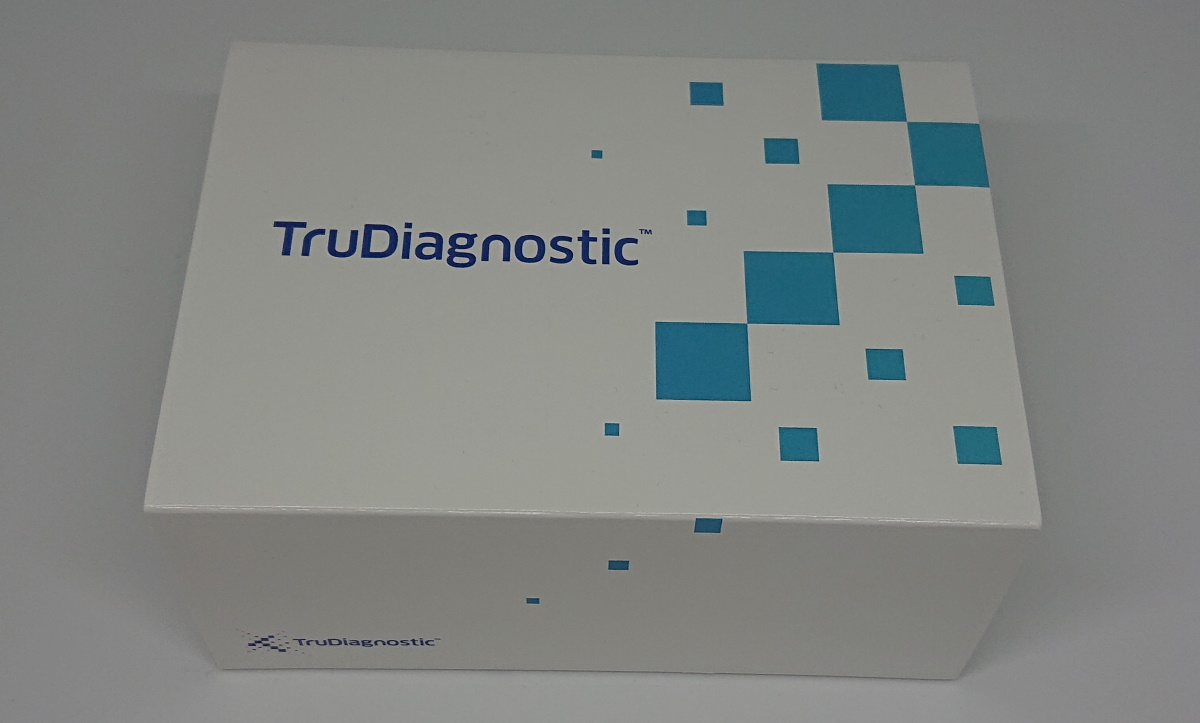
Inside, it appeared to contain the usual instruction leaflet, plasters and swabs…

… until I spotted a Tasso+ kit…
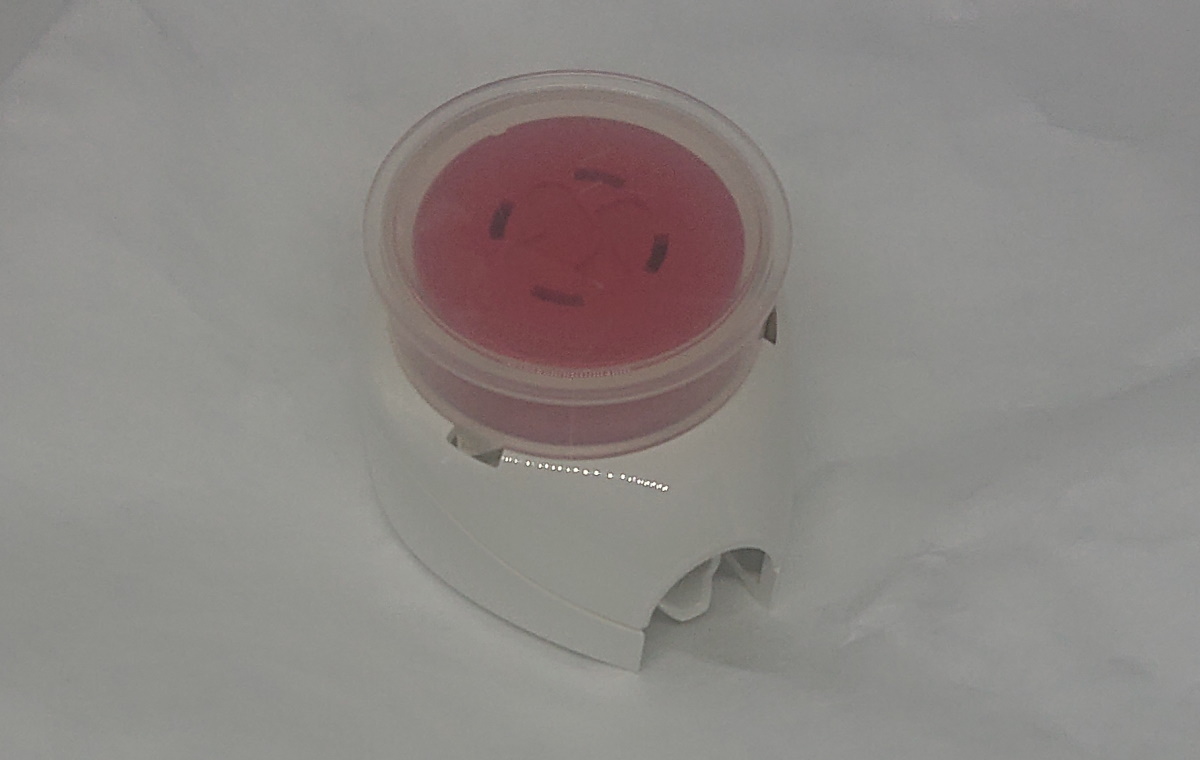
I’ve not come across one of these before, but it is designed to take a blood sample more easily than the usual finger prick blood drop method – more about that later!
Before taking the test, it is necessary to register the kit so that TruDiagnostic know who the sample belongs to when they receive it back in the post. Only a small glitch here - I couldn’t register with my normal email address as it didn’t recognise .club as a valid domain – but I won’t hold that against them!
As well as mine and the kit’s details, you’re also prompted to complete a small questionnaire. This was definitely aimed at the life extensionist market as it asked about relatively niche supplements (rapamycin, resveratrol, NAD boosters, etc) and anti-ageing interventions (exosome, stem cell and senolytic therapies).
None of this information is used to determine your epigenetic age, but if you opt in then it can be used for research and analysis.
So, back to taking the biological age test. I was provided with a Tasso+ blood collection device, which is usually a $30 extra.
Instead of dripping blood from a finger prick into a vial, with the Tasso+ you attach the vial to the device…
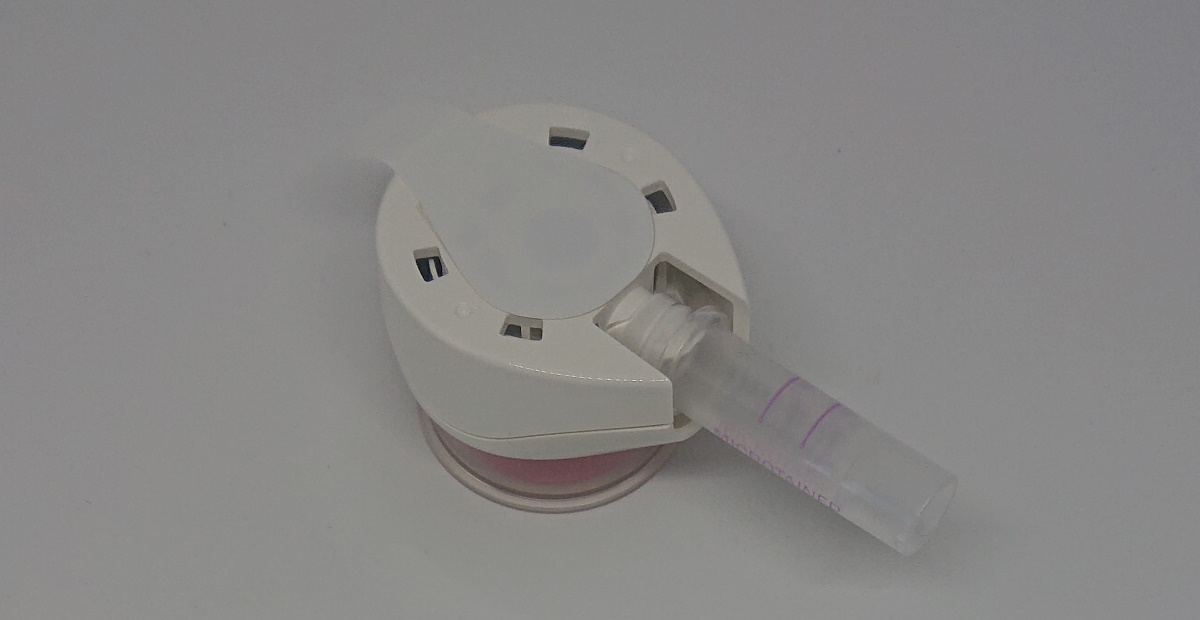
… remove the sticky tape and attach it to your arm.
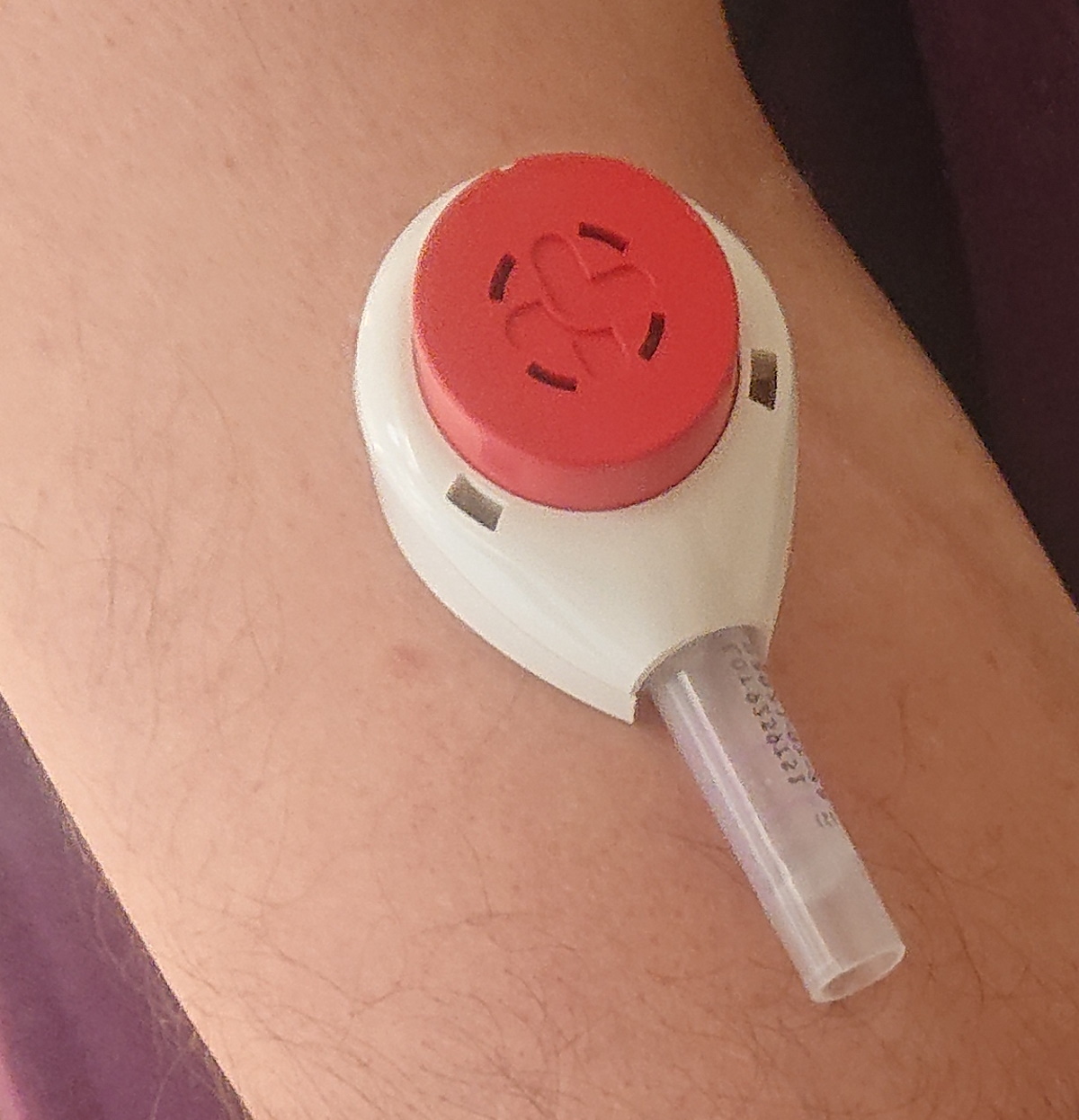
A firm press of the big red button is loud but painless, initiating the blood draw. Unfortunately, having followed the instructions to warm up my arm in advance, and to move around if necessary, the collection tube was still empty after 5 minutes – just leaving a small blood clot on my arm when removed.
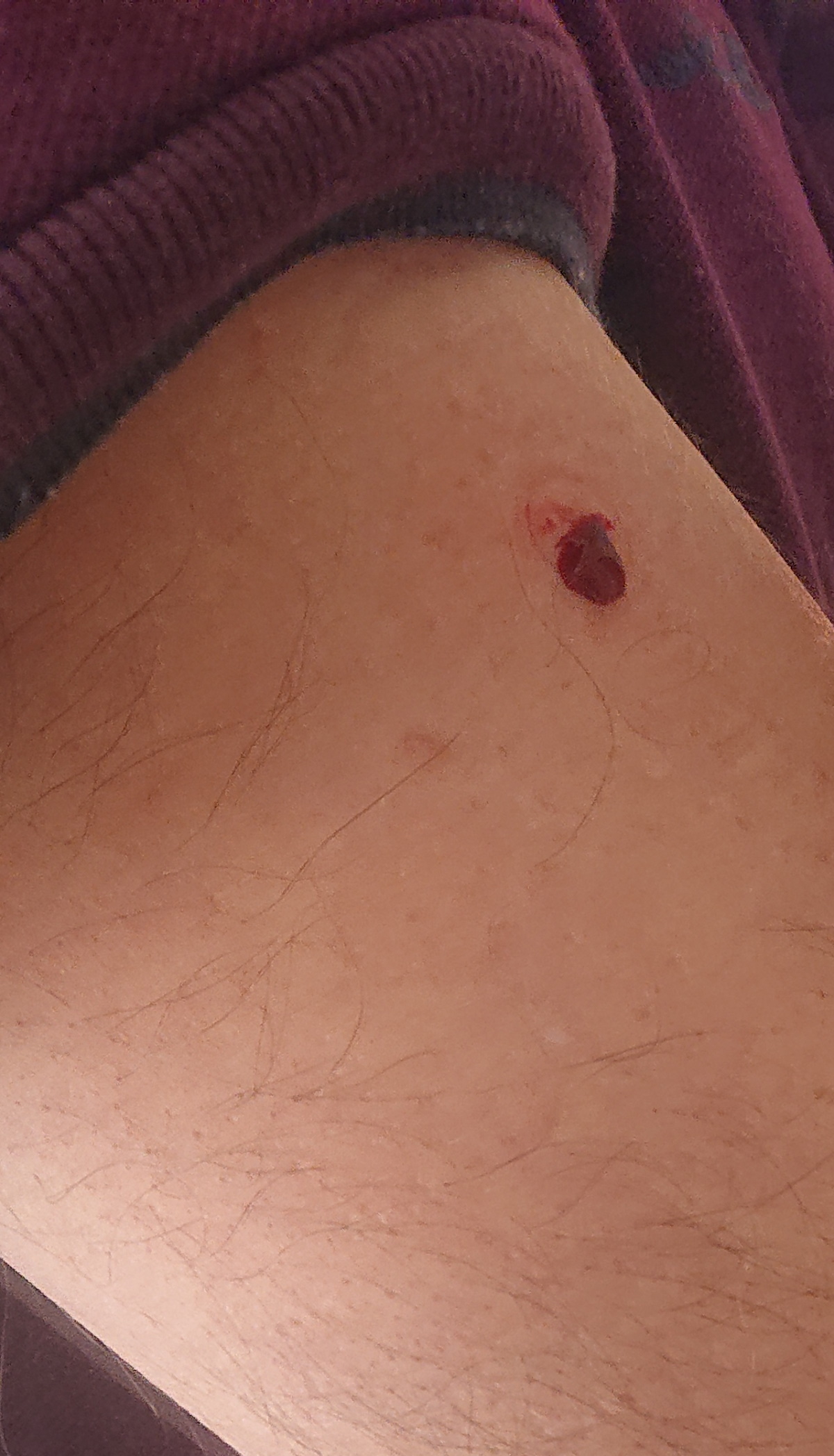
TruDiagnostic provided another kit, which the second time was successful. In the meantime I had seen other instructions on using the Tasso+ which included a heat pack, so I doubled my efforts in warming up the arm which hopefully made a difference, though it still only just collected enough blood.
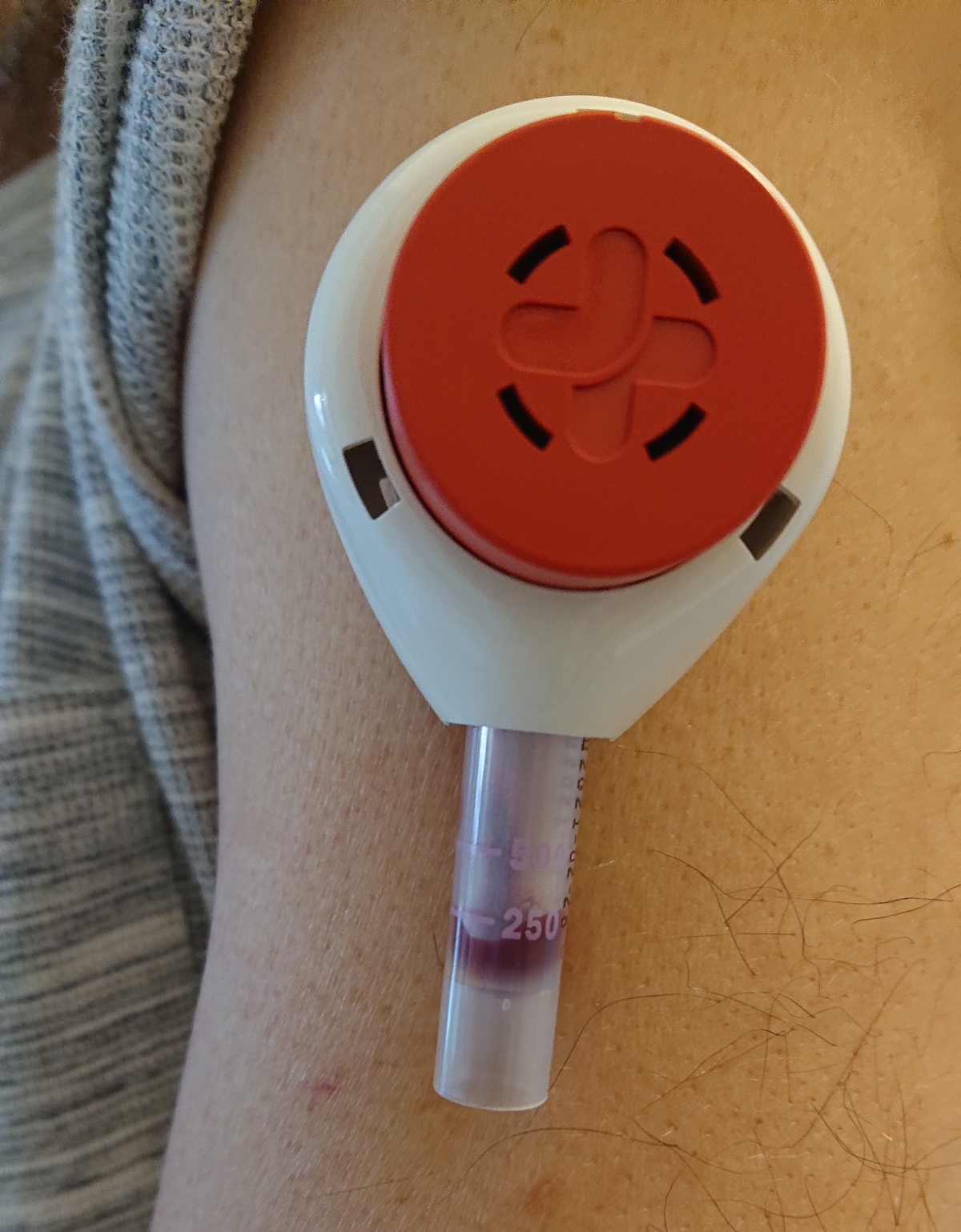
Having removed the vial …
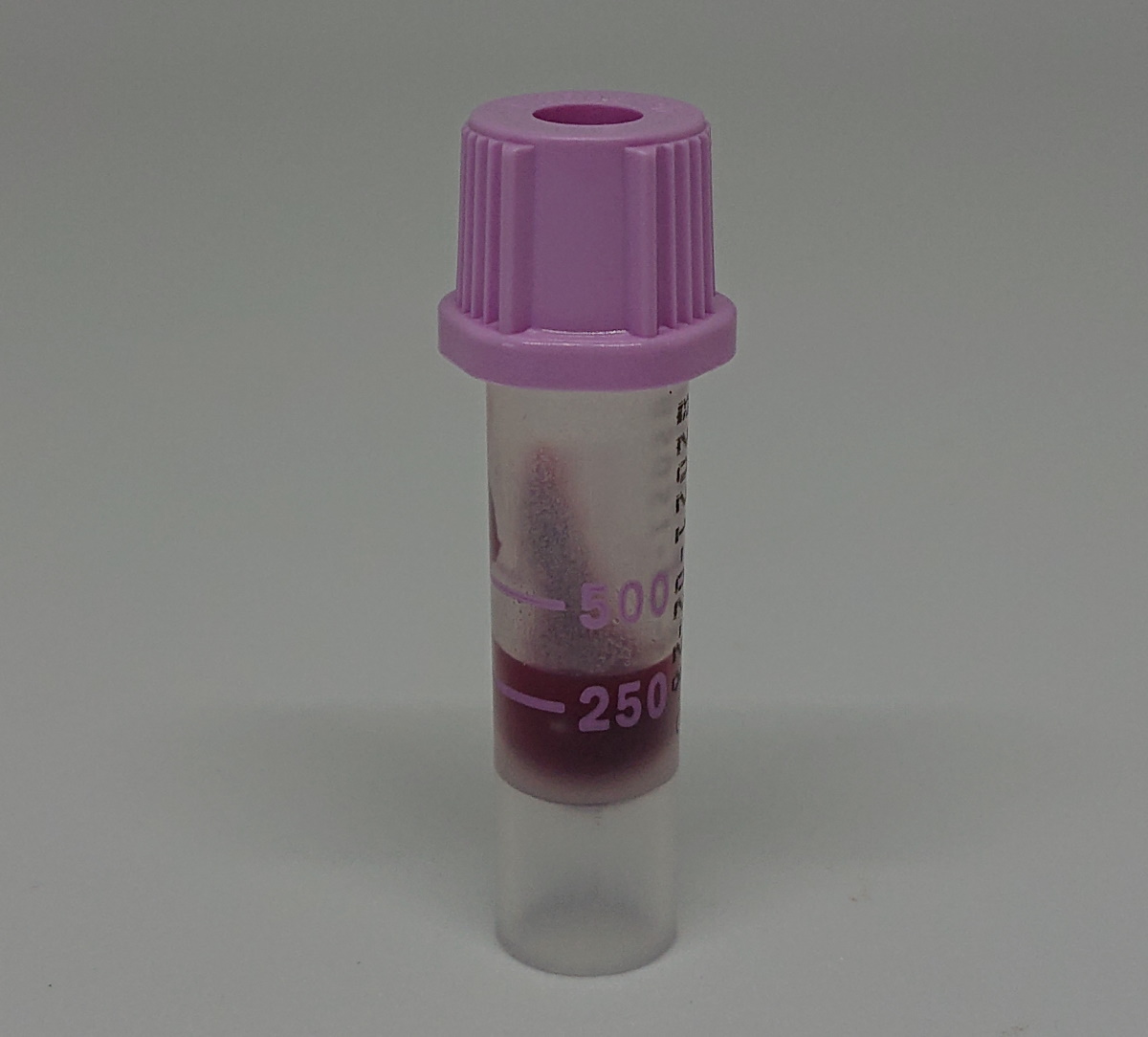
… and shaken it (to activate a stabiliser, I assume) I then shipped it back to the US via UPS.
I was notified that my report was ready 4 weeks after sending it off. In fact, it turned out to be 5 reports, all available online.
The first report gives you the key number that you’re looking for – your biological age.
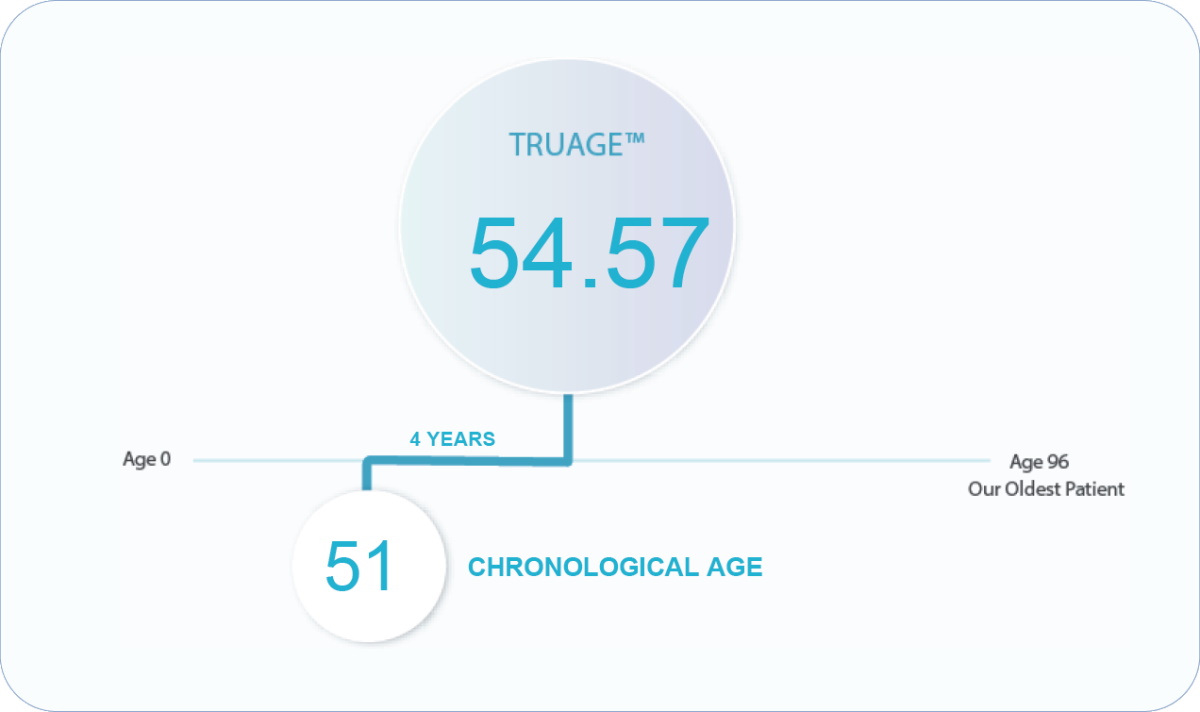
My result was 54.47, which apart from being unnecessarily specific (given it has an error range of plus or minus a couple of years!) is consistent with other biological age tests that I have taken that show mine is generally a couple of years more than my chronological age.
It includes two other views of the result. Firstly, an EpiAge ratio (1.07 for me) which would be interesting to track overtime, rather than the absolute difference in ages, as a 5 year difference at 30 is more significant than a 5 year difference at 60 years of age.
Secondly, there is a scatter graph showing where your result fits in to other people being tested. I always like this view to visualise whether I’m sort of the middle or right at the edge of variability, which isn’t always obvious just from the number.
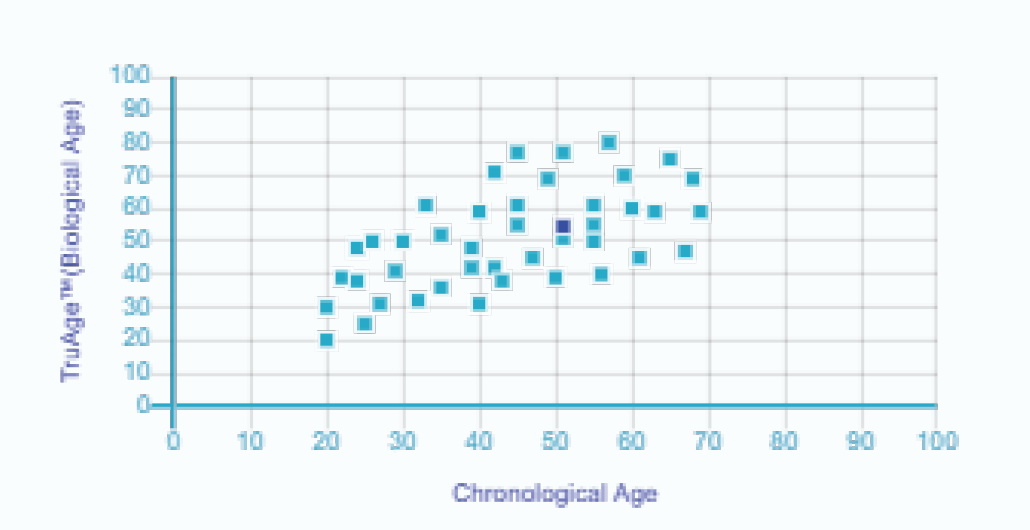
The report also provides some generic information about lifestyle impacts on your biological age.
TruDiagnostic’s Immune Report primary splits your epigenetic age into intrinsic and extrinsic ages.
For me, the intrinsic epigenetic age (IEA) is almost identical to what was reported as the main result, though I’m not sure if this would be the same for everyone.
The extrinsic epigenetic age (EEA) takes into account age-related changes in blood cell composition and is considered an overall measure of the strength of your immune system.
My extrinsic epigenetic age came out at an incredibly low 39.9 years – so my immune system is functioning as well as someone about 12 years younger than me. Not only is this great news during covid times (we’ve all seen the age-related deaths graph) but also for the occurrence of many other diseases, particularly cancer, which increase with age partly due to a weakening immune response.
The report also provides a profile of your immune cells (percentages of lymphocytes, neutrophils, monocytes and eosinophils) and a good introductory explanation of immune cells and immunosenescence.
The next report was a bit unexpected, in that your susceptibility to weight gain/loss seems like something more likely to come from your genes. But, TruDiagnostic use research that shows that the pattern of methylation on PON3 can predict how a person’s weight and body fat will respond to caloric restriction. PON3 is a protein that protects lipoproteins like HDL and LDL against oxidation. The company looks at 11 CpG sites on the PON3 gene to categorise people into non-responder, intermediate or full responder. I turn out to be an intermediate responder.
Although my weight loss responsiveness assessment may not drive any lifestyle changes for me (partly as I’m “intermediate”, and partly that I’ve never really been overweight) I will be interested to see what similar reports are available in future. A common problem with biological age clocks is that it can be guess work as to what is causing a high result and what to do about it; so more visibility of risks and rewards would be great. For example, if my epigenetic age was average but my methylation profile showed an increased risk of heart disease, and a lower risk of kidney disease, say, then I’d know where to focus my interventions.
Graciously, TruDiagnostic plans to retroactively produce reports when they come up with new trait analysis, so I’ll be looking forward to seeing more in the future based on this existing test.
An added bonus, as it’s something that people pay to test independently for, was the telomere length report. Recent research has shown a link between DNA methylation and telomere length, allowing TL to be estimated from your epigenetic profile. Led by Steve Horvath, this DNA methylation estimator of telomere length (DNAmTL) is based on 140 CpGs.
More good news (for me!) on the telomere length front, mine are a tiny bit above average for my age at 6.77 kilobases. As shortening telomeres may be responsible for factors that cause cells to age, this is a good place to start, even though some research is pointing at the rate of attrition (i.e. how fast telomeres shorten in an individual) being more important than absolute length.
Slightly confusingly, although the length of my telomeres was just above average, my telomere age was coming out at 69.8.
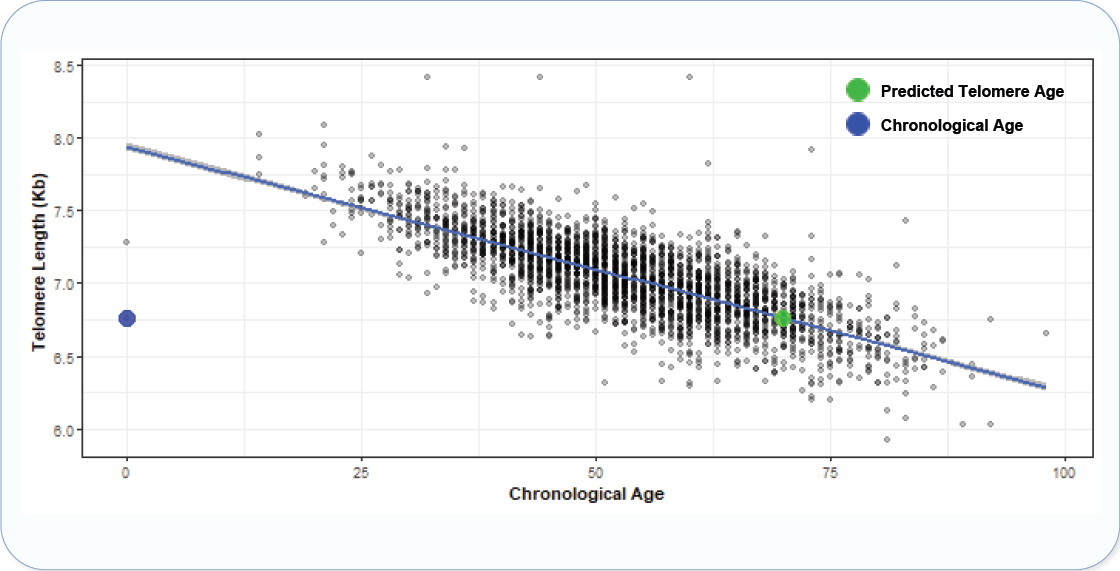
If my telomeres are a bit longer than average for my age, surely my telomere age (like a specific chronological age) should be a bit lower than my chronological age? And the answer is yes… against the general population. However, this scatter graph compares me to other people taking the TruDiagnostics epigenetic test, and it turns out that those people are really looking after themselves and tend to have longer telomeres than the average population.
Whereas your biological age (epigenetic or otherwise) tells you the overall state of your body today, based on the cumulative ageing damage over your lifetime, it doesn’t tell you how well you are doing right now with slowing down ageing. However, the DunedinPoAm analysis does that – giving you a pace of ageing rate, independent of your biological age.
My pace of ageing value came out at 0.92 – which means I’m ageing slower than average for my age (1.0 would be average, with an observed range between 0.6 - 1.4). Over the last decade I’ve seen that my biological age increases slightly less, year on year, than my chronological age, so that looks about right.
The Dunedin(P)ace(o)f(A)ging(m)ethylation algorithm was developed by researchers led by Columbia University, using blood tests from almost a thousand members of the Dunedin Study who were born in 1972–1973. Their machine-learning technique discovered 46 methylation marks that provide a single-time-point measure of a person’s pace of biological aging.
TruDiagnostic have an exclusive, worldwide license to use the algorithm so it is the only organization that can use it commercially.
Just in case you’re interested in specific genes, you can download your raw epigenetic data - 1,300 CpG sites with the core product (selected as the most useful sites which are use by other popular algorithms) or all 900,000 values with the “complete collection” product (massively more than is available with most other commercial tests).
These beta values are an approximation of the percentage of methylation for the population of a given CpG site in the sample. Ageing biology is never simple, and just because some of your cells are methylated at a particular spot doesn’t mean the all are. For example, if the Illumina instrument scanned 100 of your cells and 20 of them were methylated at a specific CpG site, then the beta value would be 0.2 (or 20%).
I’m not sure if any organisations are offering the service, but if you wanted to run a different algorithm across your results (maybe to check your susceptibility to something not covered in the reports) then you would be able to download the raw data and provide it to a third-party. Maybe not too useful now, but a good acknowledgement that you own your DNA methylation data and aren’t reliant on TruDiagnostic to interpret it for you,
I have now tried epigenetic biological age tests from 3 providers…
… so I thought it would be interesting to see how they compare. They’ve been spread over nearly two years, so I’m plotting the results against chronological age at the time of testing.
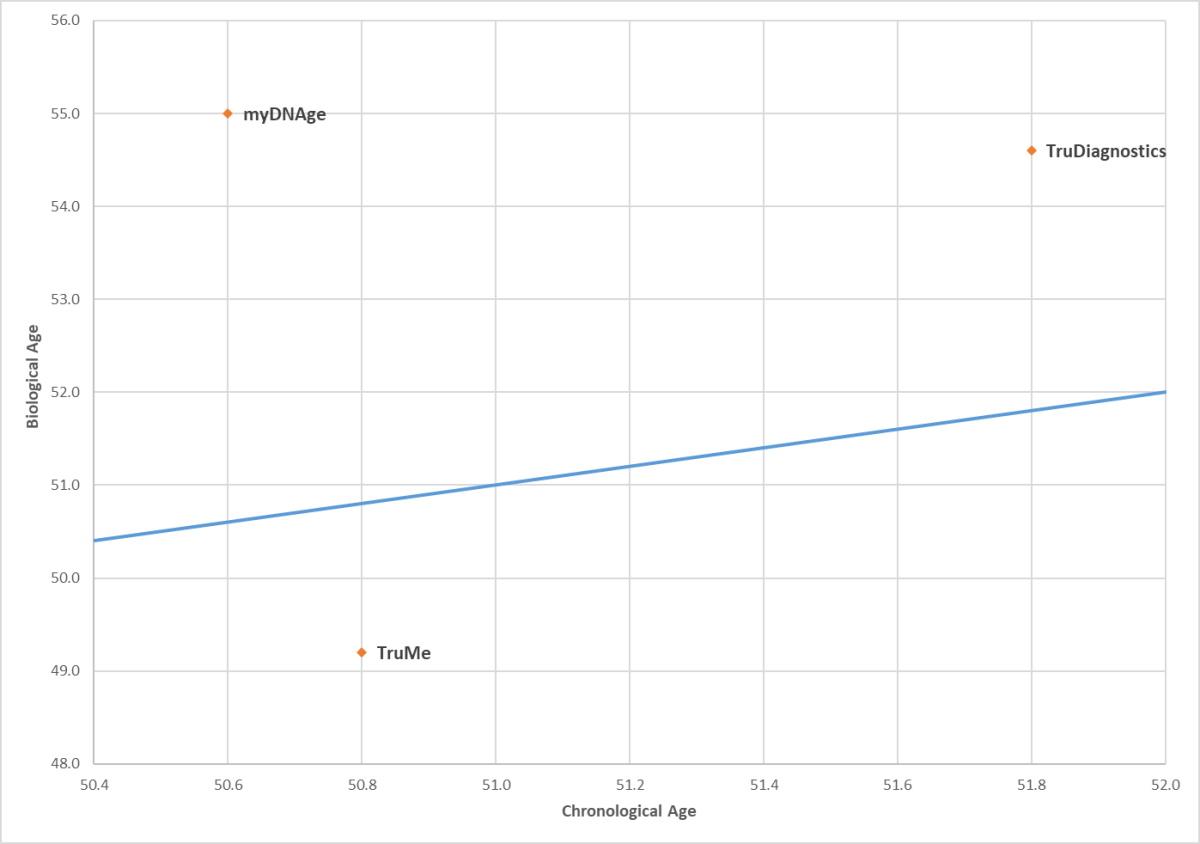
Of course, it would be nice to believe that TruMe’s result was right, but as other biological age tests (not using epigenetics) tend to always put me as older than I really am, I think we’ll have to assume it’s within its stated error margin but has probably come out too low using only 9 CpGs.
myDNAge uses over 2,000 CpGs and comes out with a very similar score, so I think it’s fair to say that, epigenetically, I’m a about 3-4 years older than my chronological age.
I’ll provide a more detailed comparison in a future blog, which will also look at my GlycanAge test as well as young.ai’s blood panel and facial analysis. Comparing them all together, using different biomarkers, will be interesting, so keep an eye out for that in the future.
TruDiagnostic’s TruAge epigenetic age test definitely seems to provide the most detailed analysis of your epigenetic age – both by the number of CpG sites that it analyses, and also the number of reports it provides based on the methylation that it finds. Obviously you pay for this level of service, so it is also the most expensive test provider that I have reviewed, so the choice is yours. Perhaps a good balance would be to alternate between cheap and expensive tests – using the low cost tests to track your relative changes in biological age, then a more thorough test to dive deeper into your epigenome.
I’m certainly impressed with the range of analysis provided, particularly the DunedinPoAm (pace of ageing) value to know how my lifestyle is impacting my biological age right now; and then the telomere length report is a real bonus.
Summary – if you can afford it, I’d recommend taking a TruDiagnostic biological age test for a comprehensive look at your epigenetic profile.
Compare TruAge tests – TruDiagnostic
Epidemiologists develop new tool for measuring the pace of aging across the life course (DunedinPoAm) - ScienceDaily
TruDiagnostic signs an exclusive license agreement with Duke University to use the DunedinPoAm rate of aging algorithm – PR Newswire
DNA methylation closely linked to telomere length - News-Medical.Net
Click on resource name for more details.
NR Supplements Personal Case Study
Harold Katcher’s E5/Elixir (Young Plasma) Rat Trial Results
Epigenetic age test provides information beyond biological age
Rate of shortening, shape and method of testing are all important factors
What can your glycome tell you about your true age?
How does the cheapest epigenetic age test on the market compare?